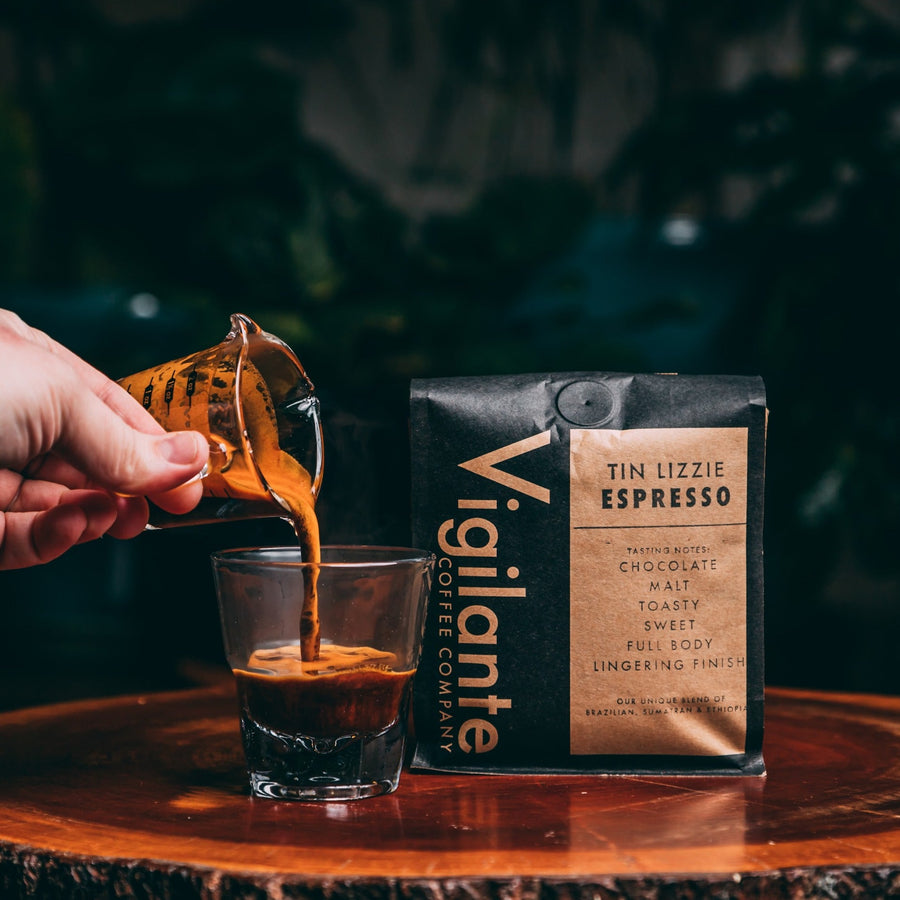What to Know Before Buying SOE Single Origin Espresso
What to Know Before Buying SOE Single Origin Espresso
Blog Article
Recognizing Coffee Beans: the Trip From Espresso to Blended Coffee Beans

The Origins of Coffee: A Worldwide Perspective
While you might believe of coffee as a modern-day staple, its beginnings map back centuries, linking with societies across the world. The story begins in Ethiopia, where tale claims a goat herdsman named Kaldi discovered the energizing effects of coffee beans after observing his goats romping energetically after eating them.
As profession courses broadened, coffee made its method to Europe in the 17th century, rapidly gaining appeal. Each society included its one-of-a-kind twist to coffee prep work, improving its background.
Cultivation and Harvesting of Coffee Beans
As coffee's trip progressed, the focus changed to the cultivation and harvesting of specific bean varieties, specifically those made use of for espresso. You'll discover that espresso beans commonly come from Arabica or Robusta plants, each offering distinct tastes. The ideal expanding problems include high altitudes and abundant, well-drained soil, which boost the beans' top quality.
Throughout the harvest, selecting methods differ. Timing is important; you desire to harvest when the cherries get to peak ripeness for maximum flavor.
Once gathered, the beans are prepared for processing, which is important in determining their final preference. Comprehending the cultivation and collecting processes provides you insight into what goes into your favored espresso, improving your admiration for each cup.
Handling Techniques: From Cherry to Bean
Currently that you've discovered collecting coffee beans, let's check out just how those cherries change into the coffee beans you love. You'll see how various harvesting techniques influence taste, complied with by the vital actions of fermentation and drying out. Lastly, we'll break down the milling and grading process that determines your coffee's top quality.
Gathering Techniques Clarified
When it comes to coffee, recognizing harvesting strategies is important, since they straight impact the flavor and quality of the beans you appreciate. There are two key techniques: careful picking and strip selecting. Careful selecting includes hand-picking just ripe cherries, guaranteeing you obtain the most effective top quality beans. This approach often results in a richer flavor profile, though it's even more labor-intensive. On the various other hand, strip picking means harvesting all cherries at once, despite ripeness. While it's quicker and more affordable, this can result in a mix of tastes, influencing the end product. Ultimately, the option of collecting technique can substantially influence your coffee experience, so it deserves understanding exactly how those beans made it to your mug.
Fermentation and Drying Out
After harvesting, the following action in handling coffee beans play a considerable duty fit their flavor. You'll discover that fermentation is crucial, as it helps damage down the mucilage bordering the beans, boosting their preference profile. Depending upon the method, this process can last from a few hours to a number of days, with differing results based on temperature level and moisture.
Sun-drying permits the beans to take in tastes from the environment, while mechanical drying out warranties regular moisture degrees no matter of climate. Appropriate drying out is necessary to prevent mold and maintain the beans' quality, inevitably influencing your cup of coffee.
Milling and Grading Refine
As fermentation and drying out established the stage for flavor advancement, the milling and grading process assurances that just the finest coffee beans make it to your cup. This stage entails eliminating the external layers of the coffee cherry, including the parchment and husk. High-quality beans obtain a higher quality, resulting in a richer coffee experience.
Roasting Strategies: Unlocking Flavor Prospective
When you roast coffee beans, the approach you select can drastically influence the taste account. Understanding the relationship in between time, temperature level, and toasting strategies is key to exposing the potential of your brew. Allow's explore how these elements come with each other to produce the best cup.
Roasting Techniques Explained
While you might think that all coffee roasting techniques generate the exact same results, the fact is that each technique exposes one-of-a-kind flavor capacities in the beans. Drum toasting makes use of a revolving drum to evenly distribute warmth, enhancing caramelization and creating a balanced taste. Air roasting, on the various other hand, distributes warm air around the beans, promoting a lighter roast with pronounced level of acidity.
:max_bytes(150000):strip_icc()/__opt__aboutcom__coeus__resources__content_migration__serious_eats__drinks.seriouseats.com__images__20110830-espresso-main-248fa93e7b7644e3baabac416fd2579c.jpg)
Effect on Taste Profile
Different roasting techniques not only affect the procedure however also significantly affect the flavor profile of the coffee beans. When you select a light roast, you'll experience bright acidity and floral notes, showcasing the bean's beginning. In contrast, a tool roast balances level of acidity with sweet taste, usually revealing chocolatey undertones. Dark roasts, on the various other hand, draw out strong, smoky flavors, in some cases concealing the bean's one-of-a-kind features. Each method reveals various oils and substances, bring about a variety of flavors. By explore various roasting designs, you can discover which profiles reverberate with your taste buds. Recognizing these nuances helps you appreciate the artistry behind your cup of coffee, boosting your general experience with every sip.
Time and Temperature Level Elements
To release the complete flavor capacity of coffee beans, both time and temperature throughout the toasting process play substantial functions. When roasting, you'll find that greater temperatures can rapidly develop flavors, yet if you hurry it, you might wind up with charred notes. Alternatively, lower temperature levels enable for an extra gradual flavor development, showcasing the beans' special attributes.

Timing is simply as important; prolonging the roast also long can cause a loss of level of acidity and brightness, while as well brief a roast might leave the beans underdeveloped. Finding that sweet place calls for practice and trial and error. By readjusting these elements, you can expose the rich, intricate tastes concealed within each bean, developing an absolutely remarkable coffee experience.
The Art of Blending: Crafting Special Coffee Accounts

Start by choosing a base coffee that provides a solid structure. Pick complementary beans to enhance particular flavor notes. For circumstances, a brilliant Ethiopian bean can bring fruitiness, while a rich Brazilian coffee adds body. Trial and error is key-- do not hesitate to change proportions till you discover your perfect account.
As you blend, bear in mind that each combination narrates. You're not just making coffee; you're creating an experience. So, take your time, taste regularly, and appreciate the journey you can try these out of discovering your signature blend.
Brewing Methods: Exactly How Preparation Affects Flavor
Mixing coffee opens up a domain name of flavor possibilities, yet how you make that blend can significantly affect your final mug. On the other hand, a pour-over highlights the coffee's quality and brightness, excellent for showcasing fragile notes.
Coffee, with its high stress, produces a focused shot that highlights sweetness and crema. If you like a lighter mixture, think about a cold mixture technique; it generates a smooth, much less acidic preference.
Eventually, experimentation is essential. Readjusting variables like water temperature level, grind size, and make time can change your coffee's profile. So, embrace the art of brewing to uncover the flavors hidden in your coffee blends. The right technique can elevate your experience to brand-new elevations.
The Future of Coffee: Sustainability and Advancement
As the coffee industry develops, sustainability and advancement are coming to be necessary for dealing with environmental obstacles and conference customer demands. You'll notice that even more coffee business are taking on environmentally friendly practices, from sourcing beans fairly to executing lasting farming techniques. These changes not only help the planet yet also boost the click here now quality of the coffee you enjoy.
You could see technologies like naturally degradable packaging and water-saving brewing techniques that decrease waste. Advanced technology, such as blockchain, is additionally coming to be prominent, guaranteeing transparency in the supply chain, which allows you to map your coffee back to its beginnings.
In addition, purchasing local areas and supporting farmers with reasonable trade campaigns promotes a more sustainable coffee ecosystem. As you drink your following cup, bear in mind that your selections can contribute to a brighter future for coffee. By going with sustainable brand names, you're not just delighting in a beverage; you're making a favorable impact on the globe.
Often Asked Concerns
What Is the Distinction In Between Arabica and Robusta Beans?
Arabica beans are smoother, sweeter, and have a greater level of acidity, while robusta beans are stronger, extra bitter, and have more high levels of caffeine. You'll notice these distinctions in taste and scent when brewing your coffee.
Exactly How Does Elevation Affect Coffee Bean Taste?
Altitude influences coffee bean taste substantially. Greater altitudes create beans with brighter level of acidity and complex tastes, while reduced altitudes frequently generate beans that are heavier and much less nuanced. You'll discover these distinctions in your mug!
What Are the Wellness Perks of Drinking Coffee?
Consuming coffee can improve your power, boost mental focus, and even improve physical performance. It's abundant in antioxidants, might reduce the risk of certain illness, and can advertise a healthier metabolic process when consumed in small amounts.
Can Coffee Beans Be Reused for Brewing?
Yes, you can reuse coffee beans for developing, however the flavor might be weaker. If you take pleasure in experimenting, try recycling them in various ways, like chilly brews or contributing to smoothie mixes for an extra kick.
Just how Should I Store Coffee Beans for Freshness?
To keep your coffee beans fresh, keep them in an impermeable container in a trendy, dark area. Prevent subjecting them to wetness, light, or warm, get redirected here as these factors can promptly degrade their flavor and aroma.
Understanding Coffee Beans: the Trip From Coffee to Blended Coffee Beans.
Currently that you've discovered about collecting espresso beans, let's check out how those cherries change into the coffee beans you like.When you roast coffee beans, the technique you select can drastically affect the flavor profile - Single Origin Espresso.While you could think that all coffee roasting approaches generate the same results, the reality is that each strategy exposes special flavor potentials in the beans.Various toasting techniques not only influence the process however additionally greatly affect the taste account of the coffee beans
Report this page